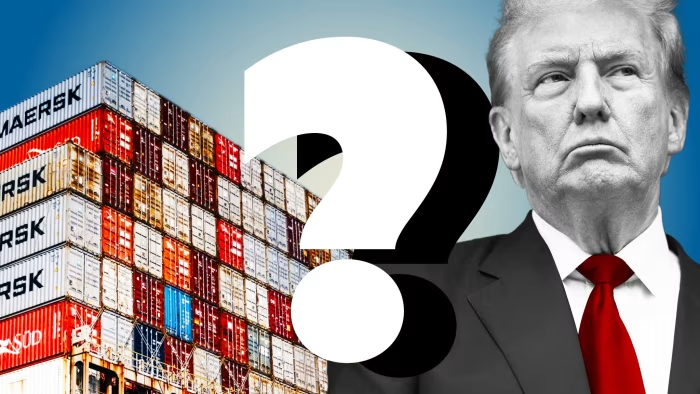By Karter Lin
The Trump administration’s recent move to exempt smartphones, semiconductors, and other key electronic products from its reciprocal tariff plan signals not strategic brilliance but a desperate attempt to salvage economic stability amid internal discord and rising global defiance. Initially portrayed as a bold tactic to reinforce U.S. manufacturing and intimidate rivals, the policy is unraveling—exposing chaos within the administration and underestimating the world’s capacity to defend its own economic interests.
This article explores two central dynamics of this unraveling: (1) the internal contradictions that have undermined the coherence of U.S. policy implementation, and (2) the growing capability and confidence of global actors, particularly China, Japan, and countries in the Middle East, to push back against U.S. economic aggression.
Internal Contradictions
What started as a nationalist call for “reciprocal tariffs” has devolved into a patchwork of policy reversals, political infighting, and strategic incoherence.
Leaked internal communications suggest disarray at the highest levels. U.S. Trade Representative Jamie Greer was reportedly blindsided by Trump’s abrupt tariff revisions, while the president’s tweets frequently contradicted explanations offered by his aides. In open cabinet meetings, even high-profile figures like Elon Musk appeared as mere observers—favored by Trump yet excluded from key decision-making roles.
Peter Navarro, once a central figure in the tariff crusade, saw his influence wane amid bipartisan criticism and public ridicule. Investor Bill Ackman publicly called for a pause in tariff hikes, while newcomer Benson—hailed by Wall Street as a stabilizing force—lacked the gravitas of seasoned financial leaders like Jamie Dimon. Although markets briefly steadied, the larger message was clear: even insiders had little grasp of the administration’s direction.
Such dysfunction is ill-suited for managing complex trade and monetary policies. Far from a calculated chess game, the administration’s erratic approach resembles improvisational theater—marked by conflicting cues and uncertain outcomes. This erosion of policy consistency has not only derailed implementation but also weakened global confidence in U.S. economic leadership.
Global Pushback and Growing Confidence
As Washington flounders, the global community is responding with newfound clarity and coordination. China’s unyielding opposition to the tariff measures, joined by resistance from Japan, the Middle East, and Europe, catalyzed a powerful financial backlash. This global response contributed to a “double-kill” in U.S. stocks and bonds, as investors reevaluated their exposure to American assets.
Reports suggest a coordinated sell-off of U.S. Treasury bonds by major investors in Asia, the Gulf, and Europe—a financial maneuver demonstrating that sovereignty can now be defended not just through diplomacy or arms, but through markets. The result was a sharp, though temporary, blow to the credibility of the U.S. bond market.
Meanwhile, U.S. media and think tanks are beginning to acknowledge a hard truth: Trump’s vision of a manufacturing renaissance is deeply flawed. A persistent domestic skills gap and strict immigration policies limit the workforce needed for reindustrialization. Instead of creating new jobs, any industrial revival will likely be dominated by AI and automation—undermining the very working-class communities the policy was meant to empower.
Adding to this irony, many of the exempted products—like Apple’s iPhones—are primarily manufactured in China. By sparing these goods from tariffs, the administration concedes a key point: the U.S. remains fundamentally dependent on global supply chains. The exemption list, rather than showcasing strategic acumen, underscores the entanglement Trump’s policies aimed to sever.
Trump’s tariff exemption strategy exposes more than a policy retreat—it reflects a deeper collapse of coherence and credibility. As internal contradictions multiply and global actors flex their financial muscle, the once-defiant narrative of economic nationalism is giving way to a reality it cannot ignore: interdependence is not weakness—it is the defining strength of the 21st century economy.

About the Author:
Mr. Linn is an international expert on international relations and financial markets, contributing actively to global discourse.



